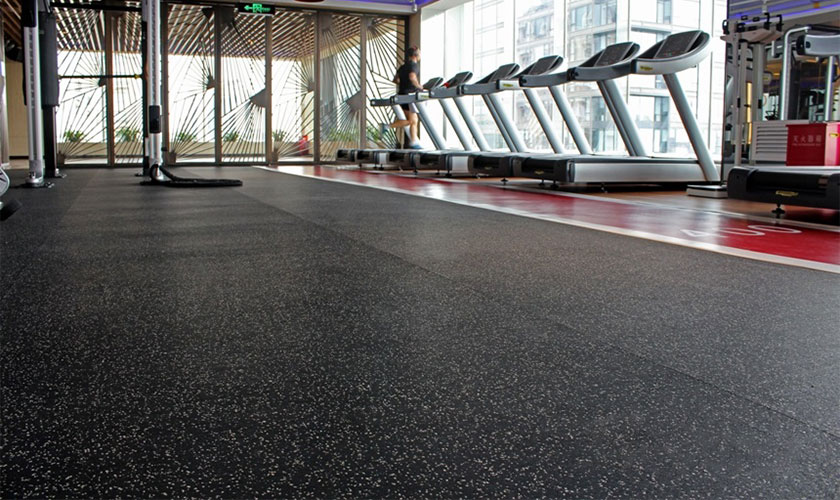Rubber flooring is a popular choice for residential, commercial, and industrial spaces due to its durability, resilience, and aesthetic appeal. Whether you’ve installed it in your gym, office, or living space, proper maintenance is essential to ensure its longevity and keep it looking as good as new. The good news? Rubber flooring Dubai is relatively low-maintenance compared to other flooring options, and with a few simple practices, you can enhance its lifespan. Here’s a comprehensive guide to maintaining your rubber flooring effortlessly.
Why Maintain Rubber Flooring?
Before diving into maintenance tips, let’s understand why it’s essential. Rubber flooring is highly durable, resistant to wear and tear, and versatile. However, neglecting regular care can lead to buildup, stains, and reduced performance. Routine maintenance ensures:
- Prolonged lifespan: Preventing damage and wear helps you maximize your investment.
- Clean and hygienic environment: Regular cleaning keeps dirt, allergens, and bacteria at bay.
- Preserved appearance: Proper care helps retain the flooring’s texture and color.
Now, let’s explore how you can achieve these goals.
Daily Maintenance Tips
Sweep or Vacuum Regularly
Rubber flooring can accumulate dust, dirt, and debris, especially in high-traffic areas. Sweeping or vacuuming the surface daily is one of the simplest ways to keep it clean.
- Use a soft-bristle broom or a vacuum with a non-beater bar attachment to avoid scratches.
- Pay extra attention to corners and edges where dirt tends to collect.
Spot Clean Spills Immediately
Rubber flooring is resistant to stains, but quick action is essential to prevent discoloration. If you notice a spill:
- Wipe it up immediately using a damp cloth or mop.
- For sticky or oily substances, use a mild detergent mixed with warm water for spot cleaning.
- Avoid using harsh chemicals like bleach or ammonia, as they can damage the rubber surface.
Weekly Maintenance Tips
Mop the Floor
To keep your rubber flooring in pristine condition, mop it at least once a week. Here’s how:
- Use a damp mop with warm water and a pH-neutral cleaner specifically designed for rubber floors.
- Avoid soaking the floor; rubber is water-resistant but excessive moisture can seep into seams and cause damage.
- Dry the floor with a clean microfiber cloth or allow it to air dry to avoid streaks.
Address Scuff Marks
Scuff marks from shoes or furniture can occasionally appear on rubber flooring. To remove them:
- Use a soft cloth dipped in a mix of water and mild detergent.
- Gently rub the affected area until the mark disappears.
- For stubborn marks, a soft-bristle brush can be used, but avoid abrasive tools that may damage the surface.
Monthly or Periodic Maintenance
Deep Clean the Flooring
Over time, dirt and grime can accumulate even with regular cleaning. A monthly deep clean can restore the flooring’s shine:
- Use a specialized rubber floor cleaner or a solution of warm water and mild detergent.
- Scrub the floor gently with a soft-bristle brush or an automatic floor scrubber (for larger areas).
- Rinse thoroughly with clean water to remove any residue.
- Dry the surface completely to prevent moisture buildup.
Reapply Floor Sealant (If Applicable)
If your rubber flooring is sealed, periodic resealing can help maintain its protective layer. Consult the manufacturer’s guidelines to determine how often resealing is required. Typically, this is done once every 1–2 years.
Additional Maintenance Tips
Protect the Flooring
Prevention is better than cure, and small measures can go a long way in protecting your rubber flooring:
- Use furniture pads or felt tips under heavy furniture to avoid dents and scratches.
- Place mats at entryways to reduce dirt and debris being tracked onto the floor.
- Encourage a no-shoes policy in areas with rubber flooring to minimize wear.
Avoid Harsh Chemicals
Rubber flooring is sensitive to certain cleaning agents. Always check the label of your cleaning products and avoid the following:
- Bleach, ammonia, and acidic cleaners, as they can cause discoloration.
- Solvents and oil-based products, which can degrade the rubber over time.
Use the Right Equipment
Using the right tools ensures effective cleaning without damaging the surface:
- Opt for soft-bristle brushes, microfiber mops, and non-abrasive pads.
- Avoid metal scrubbers, rough sponges, or tools with sharp edges.
Troubleshooting Common Rubber Flooring Issues
Problem: Fading or Discoloration
- Cause: Exposure to harsh chemicals or direct sunlight.
- Solution: Use UV-protective treatments and avoid harmful cleaners.
Problem: Stubborn Stains
- Cause: Prolonged exposure to certain substances.
- Solution: Use a rubber-safe stain remover or consult a professional cleaner.
Problem: Warping or Lifting Edges
- Cause: Excessive moisture or poor installation.
- Solution: Address moisture issues and consider resealing or reinstallation.
Why Choose Rubber Flooring?
While maintenance is crucial, it’s worth remembering why rubber flooring Dubai is such a fantastic option in the first place. Its durability, slip resistance, and low-maintenance nature make it ideal for gyms, kitchens, playrooms, and commercial spaces. Plus, its eco-friendly qualities add a touch of sustainability to any space.
Conclusion
Rubber flooring is a smart investment, and with the right care, it can last for decades while retaining its aesthetic and functional appeal. By incorporating these simple daily, weekly, and monthly maintenance tips, you can keep your rubber floors in excellent condition. Remember to use the appropriate cleaning products, protect the surface from damage, and address issues promptly to ensure long-lasting performance.
With minimal effort, you can enjoy the benefits of rubber flooring for years to come!
Let me know if you’d like to adjust the tone, add visuals, or optimize it further!


